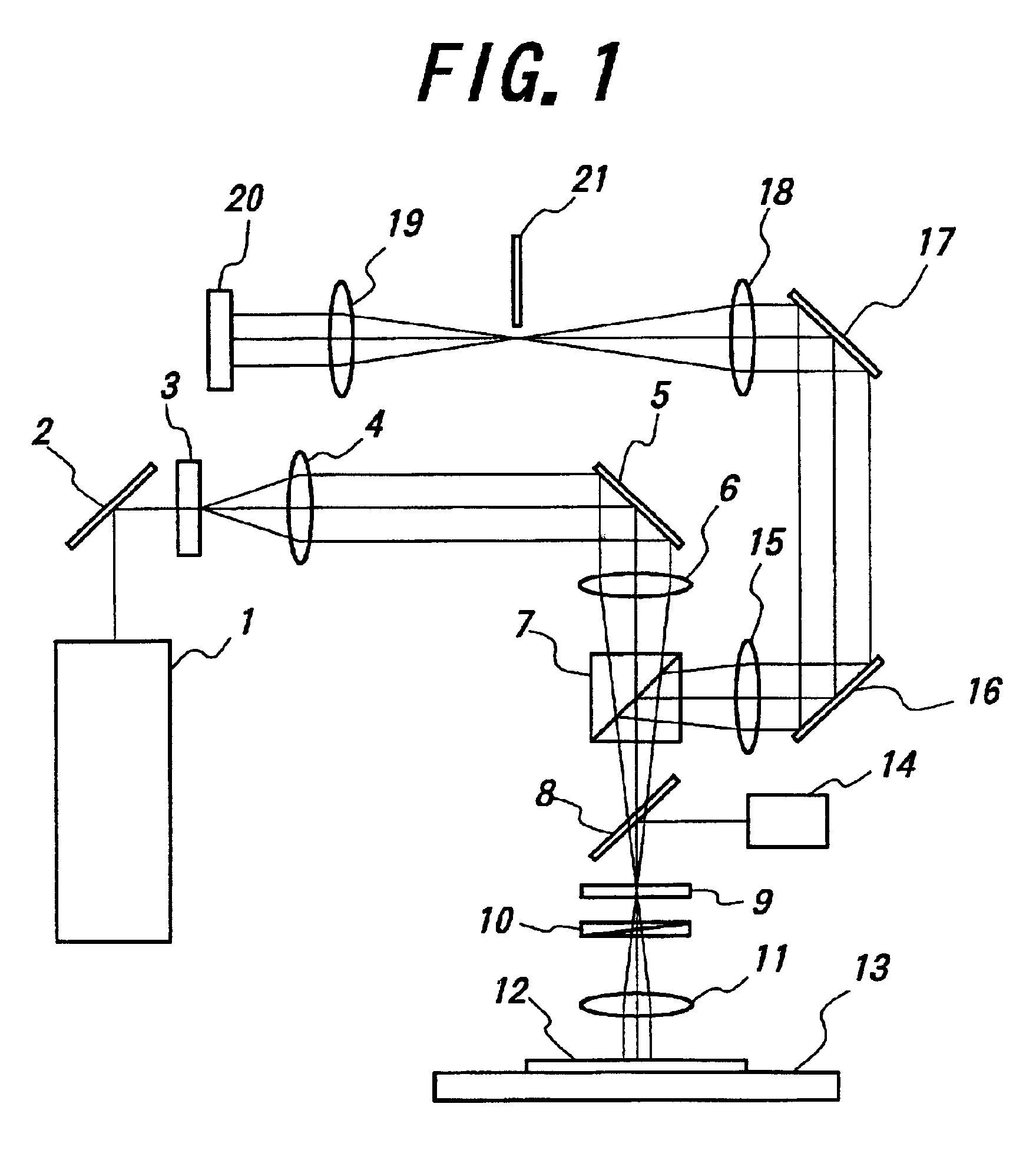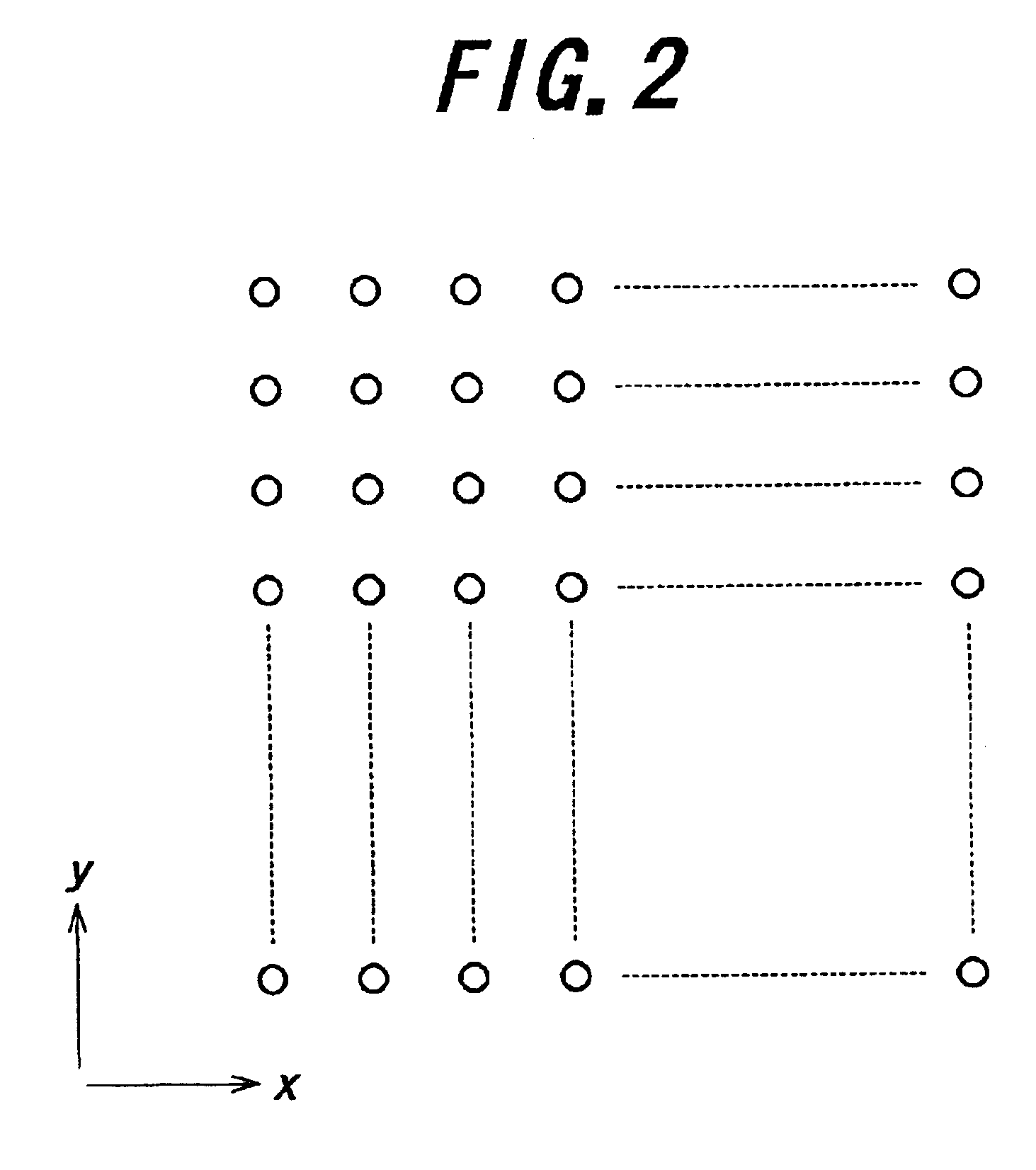Optically scanning apparatus and defect inspection system
- Summary
- Abstract
- Description
- Claims
- Application Information
AI Technical Summary
Benefits of technology
Problems solved by technology
Method used
Image
Examples
Embodiment Construction
Preferred embodiments of the present invention will be described in detail below while referring to the attached figures.
FIG. 1 is a schematic view showing an embodiment of an optically scanning apparatus according to the present invention. In this example, as a light source 1, use is made of a YAG laser generating laser light of a wavelength of for example 532 nm. The beam emitted from the laser source 1 is reflected by a full reflection mirror 2 and strikes a diffraction grating 3. The diffraction grating 3 is comprised of a two-dimensional diffraction grating. The striking light beam is converted to a two-dimensional beam array of m×n number of light beams (m and n being natural numbers of 2 or more). In this example, a single light beam is used to generate a 33×33 two-dimensional beam array. FIG. 2 is a view of the converted beam array projected on a plane perpendicularly intersecting the light axis. The m×n number of light beams form a two-dimensional beam array comprised of li...
PUM
 Login to View More
Login to View More Abstract
Description
Claims
Application Information
 Login to View More
Login to View More - R&D
- Intellectual Property
- Life Sciences
- Materials
- Tech Scout
- Unparalleled Data Quality
- Higher Quality Content
- 60% Fewer Hallucinations
Browse by: Latest US Patents, China's latest patents, Technical Efficacy Thesaurus, Application Domain, Technology Topic, Popular Technical Reports.
© 2025 PatSnap. All rights reserved.Legal|Privacy policy|Modern Slavery Act Transparency Statement|Sitemap|About US| Contact US: help@patsnap.com



